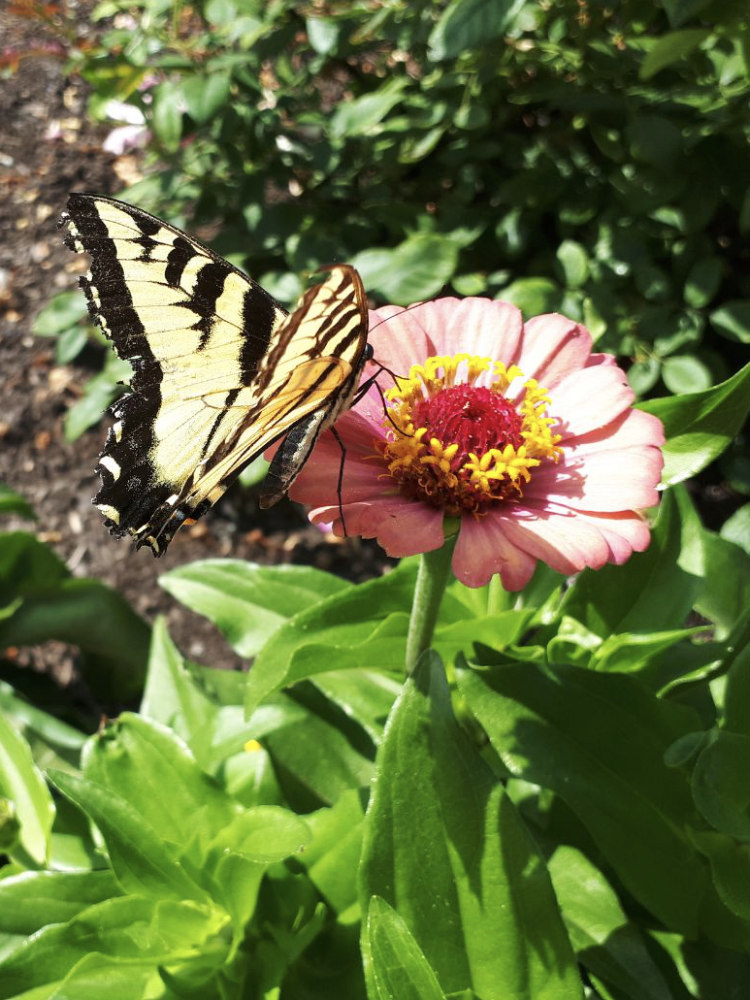A Pollinator-Friendly Garden
Article by Pat Zander
Pollinator Attraction
My husband and I have always tried to attract birds to our garden. That meant planting shrubs
and perennials that would be sources of food and shelter, and minimizing the use of pesticides
that might harm.
Then we got a hive of honey bees and found that many of the same principles apply. In
particular, bees need a good and consistent source of pollen and nectar-rich flowers during the
warm season. And being very careful with pesticides is even more critical. As they feed, they
are moving pollen around and fertilizing the flowers. The majority of our food crops need these
busy little critters to accomplish this for them before they can produce seeds or fruit.
At one time, I thought there was nothing more entertaining in the garden than watching a
couple of robins bathe in the fountain. However, watching a bee wiggle her way into a tubular
flower and then wiggle back out, covered with pollen, is right up there too. It is a huge bonus
that I am now more aware of all the other pollinators that come our way. With awareness
comes appreciation. I’ve seen three different species of bumblebees “working” the same
patch of flowers, a tiny bee the size of an ant navigating a Hydrangea bloom, and the delicate
scalloping leafcutter bees make on a rose leaf.




Some Familiar Easy to Grow Favourites
Early Spring:
Crocus | Glory of the Snow | Pasque Flowers | Snowdrops | Tulips | Hazelnut | Pussywillows
Late Spring:
Allium | Lilac | Saskatoons | Elderberry | Blossoming Berries | Blossoming Fruit Trees and Shrubs | Oregon grape
Summer:
Beebalm | Catmint | Coneflower | Dill | Fennel | Globe Thistle | Hyssop | Jupiter’s Beard |
Lavender | Lambs Ears | Mint | Russian Sage | Salvia; | Snapdragons | Veronica | Yarrow | Butterfly Bush | Ninebark | Rose of Sharon
Late Summer into Fall:
Autumn Joy Sedum | Sunflowers | Bluebeard (Caryopteris) | Russian Sage

I have mentioned only the plants in our garden which I know to be pollinator favourites. There
are hundreds more. A quick search on the internet will provide lists of appropriate choices;
borderfreebees.com is a good one. Also, do check out the plant list and images on OXA’s Pollinator Garden in the UnH2O Demonstration Garden on this site.
It is also worth noting that native plants are the most appropriate for feeding native insect
species. Bonus that they are really easy on the water.
Living in the Okanagan where fruit growing is an important industry, gives us even more reason
to encourage healthy populations of pollinators.
Oh, and if you happen to have a few dandelions in your lawn, you are serving bee candy. Now
there’s an excuse to avoid hours on your knees digging them out.




0 Comments